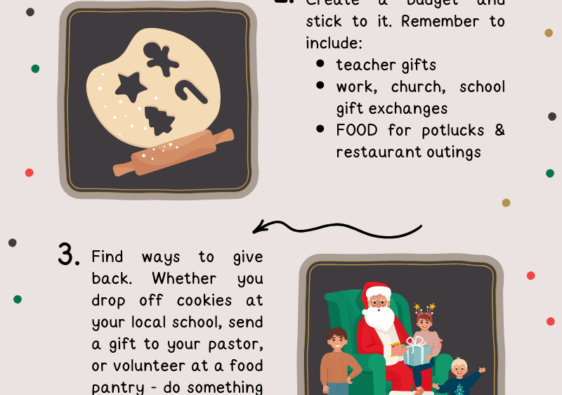The buzzword, bullying, might be more popular than a pair of Louboutins thanks to Brandi Glanville. While that platform was in teardown mode more than five years ago, bullying in school settings is still a hot topic. How do parents and educators keep bullying in check?
What is Bullying
Foundational to any successful conversation on a specific topic is a baseline understanding of key terms with definitions. So, what is bullying? Is it harassment? Is it teasing, taunting, and mean behaviors? Well, maybe. These behaviors on their own do not constitute bullying. According to Dictionary.com, bullying is comprised of archaic, violent, aggressive behaviors. While that’s a great start, knowledgeable educators, counselors, and behavioral professionals like the APA (2011) agree four components must be present to truly be considered bullying. The four components of bullying are:
- Hurtful
- Repetitive
- Power Imbalance
- Intentional
Bullying is hurtful. Whether through words, pranks, physical gestures, or physical actions, bullying causes pain to the recipient. Pain can be psychological, mental, or physical. It can also be social.
Bullying is ongoing and repetitive. A single experience of painful teasing would not constitute bullying. Even two encounters of harassment, teasing, or shoving alone would not be considered bullying.
Bullying is characterized by a power imbalance. This can manifest in various ways, such as through one’s social position, privilege, or status. For instance, a child whose parent is employed on campus may advantageously use this security to freely tease, pick on, harass, or harm another child. This power imbalance can make any conflict more dangerous, as the child with secure connections to authority figures may have an unfair advantage.
Lastly, bullying must be intentional. An accident is not bullying, regardless of any pain created. Intentional actions require directed and targeted attention.

What Bullying Is Not
Hurtful actions, unkind, thoughtless, or careless words; while unpleasant, these alone do not make an experience bullying. Even combined, these do not equate to bullying. A single or string of threats without a relational power imbalance is not bullying. For example, if a classmate or colleague states they intend to report you for any reason, this must be partnered with an advantageous position. Perhaps the colleague is the wife of a top-level executive in the company. This could be bullying if it is ongoing and hurtful.
Assertiveness is not bullying. Poor communication or a lack of social skills are not bullying. Someone can be rude, but not necessarily a bully. A forward communicator who has an esteemed position within a peer group could potentially be a bully if their actions or words are hurtful, ongoing, and intentional.
Bully Behaviors
Verbal Bullying
Verbal bullying would be put-downs, threats (direct and veiled), and gossip or rumor spreading. Just to remind you, these alone do not constitute bullying. It must also be accompanied by a power imbalance and intentional, hurtful, and ongoing behaviors.
- “I’ll get you during recess.”
- “You better watch your back in the cafeteria.”
- “I know where you sleep.”
- “My brother runs this company.”
- “I heard _____.”
Physical Bullying
Physical bullying can be a brush against the body. For example, in passing, if an elbow thrusts out and contacts, in any way, the body of a target that could be physical bullying. Even a minor brush by, finger poked onto the skin, or adjusting of a collar/clothing could be physical bullying.
- Poking
- Hitting
- Tripping
- Creating a mess in someone’s personal area
- Pulling clothing
- Pushing
- Tapping
- Throwing an object
- Shoving
- Sneezing or spitting
- Throwing liquid, food, or other objects
These are not the only forms of bullying. Waseem and Nickerson (2023) reveal relational or social bullying as a dangerous form of bullying where victims are targeted for isolation, ridicule, or social disgrace. Cyberbullying is another form that the pair identify. Waseem and Nickerson (2023) explain cyberbullying (targeted online behavior that is hurtful) this way:
Because online content is easily preserved and disseminated, cyberbullying results in ongoing suffering, especially when hurtful messages “go viral.” Cyberbullying differs from traditional bullying as it does not rely on physical proximity or a specific location and can occur at any time of day or night.
How to Deal with Bullies
If your child or another child you’re close to is being bullied, it would be beneficial to connect intentionally with the child. Develop or deepen a relationship with the child. This will indirectly build the child’s self-esteem and ability to regulate their emotion. Spending quality time and noticing the child’s uniqueness will increase their perception of their self-worth. This can help children learn to manage and redirect unwanted attention. Further, through a strong connection with you, they are more able to quickly discern poor treatment. When an individual is starved for appropriate affection, connection, and relationship, it can create an opportunity for negative attention or unhealthy relationships.
When an adult you’re close to is being bullied, it may be helpful to offer a soft observation. A response like, “It sounds like bullying,” might help with an understanding or acknowledgment of the situation. If they have confidence in their perception, this will likely support them to act. Below are four specific action steps to stand up against bullying behaviors.
Be Calm
Maintain emotional control. The bully thrives on an emotional response from victims. This is part of the goal-to control their victim’s emotions. Remain poised and confident. Remind yourself of past victories in disappointing situations and of your strengths. You win when your response remains consistent and calm.
Be Firm & Clear
Again, emotionally controlled communication is key when diffusing a bully. Firm, clear, and simple statements work best for this. Examples may sound like the following:
- “That tone is unacceptable.”
- “Don’t talk to me like that.”
- “You brushed my arm. Do not touch me.”
- “I won’t tolerate name calling.”
- “Name calling and gossip is unprofessional.”
Expect a Standoff
Generally, the bully has mastered their manipulative tendencies for years. Expect that there will be a standoff when you stand up against these tactics. Most people cower, avoid, and minimize the offending behaviors. If you directly confront the bully, it may be met with a show of might. Do not back down. Doing so can increase hurtful maneuvers to reinforce power.
Get Support
The bully may use social influence as a weapon against you. One way they “win” against victims is by intentionally creating and reinforcing victim isolation. Leverage your social power by having support. For adults, notify Human Resources. Confront the individual with other individuals whom the bully has victimized, or have a neutral party present to create a sense of support. Bullies will back down when exposed. Their ego is fragile and will not be able to withstand public exposure.
Professional Support for Bully Survivors
When harm has been created due to bullying, it can take time for healing and growth. A professional who specializes in conflict resolution and communication skills training may provide valuable tools and support in this endeavor to create new response patterns. Consider working with a licensed counselor at Joyful Journeys Counseling if childhood memories are resurfacing as a result of the bullying experience. It might be time to process trauma or adverse experiences from childhood. With the help of a seasoned expert, your past pain no longer has to have power over today.
Resources for Professional Educators
Just Say Hello is a program that can be utilized in the classroom or campus settings for Social Emotional Learning (SEL) lessons. For those informed souls who may be concerned that JJC has allied with The Dark Side, fear not. There are informed professionals within the system who have no power to bench the term for the remainder of their season. (Know something I do not know? Holla!) It is for them that we utilize this term and offer slices of unwoke information. The Just Say Hello program utilizes the underlying topic of bully prevention, but the overt messages surround friendship and connection.
Sources:
Dictionary.com. (n.d.). Bully. https://www.dictionary.com/browse/bullying
American Psychological Association. (2011). How parents, teachers, and kids can take action to prevent bullying: Preventing and stopping bullying involves a commitment to creating a safe environment where children can thrive, socially and academically, without being afraid. https://www.apa.org/topics/bullying/prevent
Waseem, M., Nickerson, A.B. Identifying and Addressing Bullying. (2023 December 13). StatPearls [Internet]. Treasure Island (FL): StatPearls Publishing. https://www.ncbi.nlm.nih.gov/books/NBK441930/




